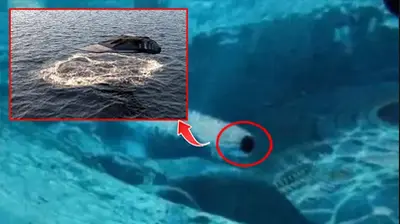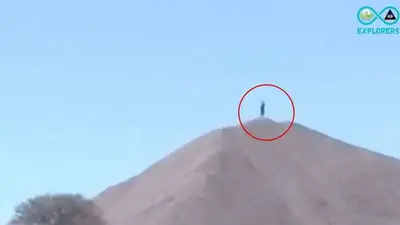Paranormal Activity
How Great Is The Probability Of A Supernova Explosion To Affect Our Planet?
Published
1y agoon
/ 8144 ViewsAbout two and a half million years ago, a supernova flared up near the Earth, the radiance of which was visible even during the day. The planet was hit by a shower of charged particles, and this bombardment, as it is believed, could well have affected what we see around us today. Scientists have found traces of space “shelling”, and for this they had to dive to the bottom of the ocean.

The cosmic rays that hit the Earth millions of years ago were emitted by an unexploded star. They were generated by a “shock wave” that swept through the galaxy, pushing hydrogen and helium atoms trapped in the interstellar medium in front of it.
Getting to Earth for thousands of years, these particles provoked various chemical reactions in the atmosphere, forming, for example, nitrogen-containing compounds. Those are known to be excellent fertilizers. Once in the soil, they would give strength to the earth’s flora. Plants, in turn, actively consume carbon dioxide. By pumping out a significant amount of it from the air, they would contribute to the cooling of the planet. As you can see, a supernova explosion hundreds of light-years from Earth is quite capable of leading to climate change.
It is clear that it is extremely difficult to track the transformations that occurred millions of years ago. If only because then there was no one to consciously document the events taking place.

Fortunately, scientists managed to find some evidence. In particular, due to the fact that the supernova bombarded the planet not only with hydrogen and helium, but also with heavier radioactive elements. There are quite a few of the latter in energy-filled stars, after the death of which they find themselves in space and take part in the formation of planets. This means that the same Earth is largely composed of similar material.
For scientists trying to look into the past, this is a serious problem, since the radioactive material of “recent” supernovae and what has been in the Earth since the formation is very similar. But here such a property of these elements as decay comes to the rescue. Material that formed a couple of million years ago would have markedly higher radioactivity than its much older counterpart.
In our case, the researchers opted for iron-60, a radioactive isotope that has four more neutrons than the much more common iron-56. Its half-life is about 2.6 million years.
The required samples were found at the bottom of the ocean, namely at points where sediments do not accumulate – on the slopes of seamounts and in places with strong currents. The so-called ferromanganese crusts, formed as a result of precipitation and solidification of metals dissolved in sea water, predominate here.

This process is very slow – the increase is only a few millimeters per million years. After analyzing samples taken from these crusts, the researchers found traces of the required iron isotope.
The first report devoted to their analysis was published in 1999. His conclusions were modest. They said that scientists are quite capable of finding supernova remnants on Earth. But that was only the beginning.
Then the same stellar substance was found in the fossilized remains of animals. And, finally, a little later, scientists compiled a map of the distribution of iron-60 on the planet with a characteristic signature of the desired supernova. This made it possible to simulate the trajectory of its “arrival”, and on the basis of this information to determine the distance to the exploded star. It has been estimated at 150-300 light years.
All this makes us wonder how likely it is that the next event of this kind will affect our planet. According to astronomers’ calculations, a supernova explosion, located relatively close to the Earth, at a distance of 30 to 300 light years, can give a tangible effect. But at such a distance, as far as is known, there is not a single star that can be suspected of intending to end its life cycle in such a spectacular way.
The closest candidate is Betelgeuse, but it is about 500 light-years away. So neither we nor our descendants, most likely, should be afraid of being bombarded by cosmic rays generated by a supernova.
Related video:
You may like
-


The Mysterious “Alien” Microchip Found In The Skull Of Napoleon Bonaparte
-


On Mars, Has a Supposed Alien Weapon Been Discovered?
-


Osnis: Shocking Data And Information Finally Comes To Light
-


Lake Natron: The Mysterious Petrified Mummies Of Tanzania
-


Tutankhamun Torquay: The First Person In 3000 Years To Be Mummified
-


Cult Of “Santa Muerte”, Should We Fear Punishment If It Is Abandoned?
NY Knicks vs Indiana Pacers Prediction 5-19-24 Picks
New York Mets vs. Miami Marlins odds, tips and betting trends | May 18

Toronto Blue Jays vs. Tampa Bay Rays odds, tips and betting trends | May 18

dq Celebrating Twin Moments: A Collection of 40 Stunning Photographs

son. These fathers take care of their children in unexpected ways when the mothers are away, making everyone laugh.

AK From raising a litter to finding her own forever home, her journey is a testament to resilience and the power of love.

tl.An orphaned baby elephant became my source of joy. We found comfort in our friendship.

bet365 Bonus Code SBKWIRE: $1K First-Bet Safety Net for NBA & NHL Playoffs, More

Fanatics Sportsbook New York Promo | Get $50 in Bonus Bets for Knicks-Pacers Game 7

St. Louis Cardinals vs Boston Red Sox Prediction 5-18-24 Picks
Trending
-

 Paranormal Activity1y ago
Paranormal Activity1y agoFrequent Strange Humanoid Alien Encounters In Canada In 1968 – Grays, Blues, And Dwarf Aliens
-

 Paranormal Activity1y ago
Paranormal Activity1y agoThe Squid Aliens Encounter Of Patricia Lyons – Saw Alien Planets And Disappeared Without A Trace
-

 Paranormal Activity1y ago
Paranormal Activity1y agoA Giant Was Recorded On The Top Of A Hill In Aguascalientes
-

 Paranormal Activity1y ago
Paranormal Activity1y agoThe Strange Encounter With A Female Bigfoot Raising A Human Child In The Harrison River Valley
-

 Paranormal Activity1y ago
Paranormal Activity1y agoCyborgs Humans- What Will The World Look Like In A Million years?
-

 Paranormal Activity1y ago
Paranormal Activity1y agoThe Chronovisor Time Machine – Took A Photo Of Jesus And Lost Manuscripts
-

 Paranormal Activity1y ago
Paranormal Activity1y agoThe Alien Encounter In California – Tall Alien Creature, Flickering Lights, And Super-Fast UFO
-

 Paranormal Activity1y ago
Paranormal Activity1y agoThe Strange Disappearance Of Alberto Gordoni – Reappeared 22 Years Later Without Aging







